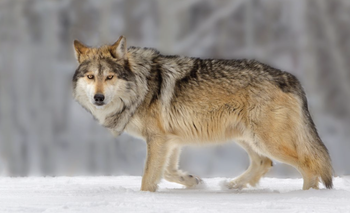The Cost of Rewilding Colorado
By Jennifer Stoeckl, MAT, OFS, March 24, 2025
The howl of a wolf may stir the soul with echoes of a bygone era, but for Colorado’s ranchers and rural communities, that same call carries a far graver message. It is the sound of an age-old predator reintroduced into a modern landscape, where livelihoods and legacies hang in the balance. The recent reintroduction of wolves into Colorado has reignited a fierce debate—not about the worth of wolves, but about the fairness of their return and the responsibility that comes with it.
The Human Cost of Wolf Reintroduction
When Colorado voters narrowly approved Proposition 114 in 2020, mandating wolf reintroduction by the end of 2023, many city dwellers imagined a romantic return of the wild. What they failed to grasp was the reality faced by rural communities who now live with that decision. For them, wolves are not mere symbols of untamed wilderness but real, living predators with real consequences.
Since the release of 20 wolves into Eagle and Pitkin counties earlier this year, reports of livestock depredation have steadily risen. Ranchers have documented multiple attacks on cattle, sheep, and even working dogs. Just weeks after the release, a Jackson County rancher confirmed the loss of a cow to wolf predation. These losses are not just financial—they represent years of careful breeding, irreplaceable bloodlines, and the deep emotional toll of watching helplessly as their herds are terrorized.
Adding to their frustration, compensation for livestock losses is slow, bureaucratic, and often inadequate. While the state offers reimbursement, proving a wolf kill is not always straightforward. Scavengers can erase crucial evidence, leaving ranchers to bear the cost alone. With every attack, trust in Colorado Parks and Wildlife (CPW) continues to erode, as many feel their voices were ignored in the rush to rewild the state.
Wolves in a Human Landscape
Wolves belong in the ecosystem, but they must be managed responsibly. The reintroduction program in Colorado has so far followed an overly idealistic model that dismisses the legitimate concerns of those living with the consequences. While advocates argue that non-lethal deterrents like range riders, fladry (flags along fences), and guard dogs can reduce conflicts, these methods require constant maintenance and have mixed success.
Wolves, highly intelligent and adaptable, quickly learn to circumvent deterrents. Meanwhile, many of the protections placed on wolves make it nearly impossible for ranchers to protect their herds. If a wolf actively chases down livestock, federal protections make it illegal for a rancher to intervene lethally unless specific chronic depredation rules have been met—a bureaucratic hurdle that often means multiple animals must die before any action is allowed.
Finding a Middle Ground
There is a way forward that respects both the ecological role of wolves and the rights of the people who share the land with them. First, there must be greater flexibility in managing problem wolves. Chronic depredation should trigger immediate intervention, not endless paperwork. Second, livestock producers should have a greater say in the management process. Their knowledge of the land and predator behavior is invaluable and should not be dismissed in favor of idealistic policies set by urban voters who will never experience the impact firsthand.
Finally, we must move beyond the false dichotomy of “wolves versus ranchers.” Wolves are neither demons nor deities—they are apex predators requiring careful, science-based management. This means acknowledging that lethal control must be an option when non-lethal measures fail. Conservation should not come at the cost of those who have stewarded Colorado’s land for generations.
Conclusion
The dream of wolf reintroduction was always a complex one, but now that it is reality, the responsibility falls on all of us to ensure it does not become a nightmare for those living on the frontlines. Balance is possible, but only if policymakers listen to the people who know the land best. If we fail to do so, Colorado’s rewilding experiment may come at a price too steep to bear—for wolves and humans alike.
Jennifer Stoeckl is the co-founder of the Dire Wolf Project, founder of the DireWolf Guardians American Dirus Dog Training Program, and owner/operator of DireWolf Dogs of Vallecito. She lives in the beautiful inland northwest among the Ponderosa pine forests with her pack of American Dirus dogs.